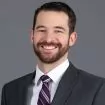Key Takeaways of the Court's Rulings: OSHA cannot enforce its vax-or-test ETS covering all employers with 100 or more employees, and employers have no obligations under it. However, the CMS mandate affecting certain health care facilities will take effect nationwide and stays of the CMS mandate in certain states are dissolved.
Analysis: The Supreme Court Bars Enforcement of the OSHA Vax-or-Test ETS.
On January 13, the Supreme Court, in a 6-3 decision, reinstituted a stay on the Occupational Safety and Health Administration's ("OSHA") Emergency Temporary Standard ("ETS") that required employers with 100 or more employees to require employees to be fully vaccinated from COVID-19 or submit a negative test on a weekly basis to report to work. Practically, this decision marks the end of the ETS, which was estimated to impact approximately 84 million workers nationwide. Simply stated, the ruling means that the OSHA cannot enforce the ETS, and employers have no obligations under it.
The majority opinion found that OSHA was created to ensure occupational safety, specifically "safe and healthful working conditions," and that any standards promulgated thereunder "must be 'reasonably necessary or appropriate to provide safe or healthful employment.'" The Court acknowledged that OSHA is permitted to pass an ETS, when "employees are exposed to grave danger from exposure to substances or agents determined to be toxic or physically harmful or from new hazards" and that the emergency standard is necessary to protect employees from that danger. The majority noted that this ETS procedure only has been used nine times, with six challenged in court, and only one of those upheld in its entirety.
The majority opinion found that the breadth of the ETS "operates as a blunt instrument" with "no distinctions based on industry or risk of exposure to COVID-19." It also found that exemptions in the ETS were narrow and "largely illusory." The ETS, therefore, was not an everyday exercise of power, but a "significant encroachment into the lives-and health-of a vast number of employees" done without Congressional authority.
The Court noted that OSHA is empowered to enact workplace safety standards, not "broad public health measures" such as here. Although the risk of contracting COVID-19 can be present in a workplace, the majority found that this risk is not an "occupational hazard in most" workplaces. Rather, it is a hazard everywhere and such universal risk is no different than a number of other daily risks outside the scope of OSHA. "OSHA's indiscriminate approach" in the ETS "fails to account for this crucial distinction-between occupational risk and risk more generally-and accordingly the mandate takes on the character of a public health measure."
While ruling against OSHA's broad rule, the Court acknowledged that "[w]here the virus poses a special danger because of the features of an employee's job or workplace, targeted regulations are plainly permissible" and that "OSHA could regulate risks associated with working in particularly crowded or cramped environments." It remains to be seen if OSHA will attempt to draft and implement a more narrowly-tailored rule.
The three-justice dissent (made up of Justices Kagan, Breyer, and Sotomayor) found a broader reading of OSHA's power and its ability to act. They described the virus as a "new hazard" that was "physically harmful" and, thus, within OSHA's emergency authority. The dissent further stated that, just because the hazard is also present outside of work, it still can be occupational and within OSHA's sphere.
A concurring opinion written by Justice Gorsuch (with Justices Thomas and Alito) provided a harsher critique of the ETS, describing the ETS as a "legislative 'work-around'" that is not authorized by statute or Congress. The concurrence, relying on past use, specifically rejected OSHA's claim that the delegated power to generally grant emergency standards provided the basis for the ETS here. Further, the concurrence notes that health standards are historically regulated at a state level. Upholding the ETS would render OSHA a "roving commission to inquire into evils and upon discovery correct them."
Analysis: The Supreme Court Allows Health Care Vaccine Mandate
The Secretary of the Department of Health and Human Services issued a final interim rule in November 2021 that requires facilities receiving funding from the federal health care programs to ensure that health care workers are vaccinated against COVID-19, unless exempted for medical or religious reasons. The Department of Health and Human Services is responsible for providing health insurance to millions of Americans through Medicare, Medicaid and children's and other federal health insurance programs within the Centers for Medicare and Medicaid Services ("CMS").
The Secretary's rule was challenged by two separate states in federal court and the U.S. Supreme Court in Joseph R. Biden, Jr., President of the United States v. Missouri and Xavier Becerra, Secretary of Health and Human Services, ET AL v. Louisiana ET AL, 595 U.S. __ (2022) held that the Secretary of Health and Human Services, has the authority to issue the vaccine mandate requiring certain facilities and health care providers receiving payment through Medicare and Medicaid and other federal health insurance programs to ensure all workers are vaccinated. The facilities and providers covered by these requirements include Ambulatory Surgical Centers, Hospices, Programs of All-Inclusive Care for the Elderly, Hospitals, Long Term Care Facilities, Psychiatric Residential Treatment Facilities, Intermediate Care Facilities for Individuals with Intellectual Disabilities, Home Health Agencies, Comprehensive Outpatient Rehabilitation Facilities, Critical Access Hospitals, Clinics (rehabilitation agencies, and public health agencies as providers of outpatient physical therapy and speech-language pathology services), Community Mental Health Centers, Home Infusion Therapy suppliers, Rural Health Clinics/Federally Qualified Health Centers, and End-Stage Renal Disease Facilities.
The Court held that the rule was within the Secretary's authority considering the function of the Department of Health and Human Services in ensuring that healthcare providers protect the health and safety of their patients. Infection prevention and control programs, designed to mitigate the transfer of communicable diseases, have long been a part of the participation rules necessary for health care providers to continue to receive reimbursement through CMS under the conditions for participation in such programs.
The interim final rule issued on November 5, 2021, amended the existing conditions of participation in Medicare and Medicaid to add a new requirement for facilities ensure to that their covered staff be vaccinated against COVID-19, while also requiring providers to offer medical and religious exemptions to staff.1 A facility's failure to comply may lead to monetary penalties, denial of payment for new admissions, and ultimately termination of participation in the programs.
The Secretary issued the rule, and the Supreme Court cited to the Secretary's supporting evidence that the vaccination of healthcare workers against COVID-19 was "necessary for the health and safety of individuals to whom care, and services are furnished."2 The Secretary found that in many facilities that 35% or more of staff remain unvaccinated, and those staff pose a serious threat to the health and safety of patients leaning on data showing that the COVID-19 virus can spread rapidly among healthcare workers and from them to patients, and that such spread is more likely with unvaccinated healthcare workers.3 And because Medicare and Medicaid patients are often elderly, disabled, or otherwise in poor health, transmission of COVID-19 to such patients is "particularly dangerous."4 Even "fear of exposure" to the virus itself "from unvaccinated health care staff can lead patients to themselves forgo seeking medically necessary care," creating a further "ris[k] to patient health and safety."5 Furthermore, staffing shortages caused by COVID-19-related exposures or illness has disrupted patient care.6
The Supreme Court, in upholding the Secretary's rule, cited to examples of infectious control rules that have applied to facilities and providers historically, such as requiring that gloves be worn during surgery and surgical instruments be sterilized. Furthermore, as the Secretary noted, health care workers have been required to be vaccinated against hepatitis B, influenza, and measles, mumps, and rubella for many years.
Conclusion
For employers, the practical conclusion of the Supreme Court's detailed constitutional law analysis is that the OSHA vax-or-test ETS is no longer in effect. While the Court's opinion left open the possibility that a more narrowly-tailored rule could be within OSHA's authority, it is unclear if OSHA will attempt to draft a new standard and face the inevitable litigation that will follow. Indeed, after the Court announced its ruling, the Biden administration appeared to acknowledge that it would not be able to enforce a nationwide mandate through OSHA, saying in a statement that "it is now up to the States and individual employers to determine whether to make their workplaces as safe as possible for employees . . . by requiring employees to take the simple and effective step of getting vaccinated."
The same is not the case for health care facilities in the United States, which will be required to ensure compliance with the CMS mandate. The rule will need to be amended with respect to compliance dates, for facilities covered by this regulation were required to establish a policy mandating vaccination for staff by December 6, 2021, and all eligible staff must have had received the necessary shots to be fully vaccinated by January 4, 2022.
CMS will ensure compliance with these requirements through established survey and enforcement processes, where a facility cited by a surveyor as being non-compliant will have an opportunity to return to compliance before additional actions occur. CMS's goal is to bring health care providers into compliance; however, the agency has stated it will not hesitate to use its full enforcement authority to protect the health and safety of patients.
Footnotes
1. 42 CFR pt. 482 (2020) (hospitals); 42 CFR pt. 483 (long-term care facilities); 42 CFR §§416.25-416.54 (ambulatory surgical centers).
2. Biden v. Missouri,595 U.S. ___, 1 (2022) at 4; 86 Fed. Reg. at 61561.
3. Id.; 86 Fed. Reg. at 61559.
4. Id.; 86 Fed. Reg. at 61566, 61609.
5. Id. at 4; 86 Fed. Reg. at 61588.
6. Id.; 86 Fed. Reg. at 61559.
The content of this article is intended to provide a general guide to the subject matter. Specialist advice should be sought about your specific circumstances.




